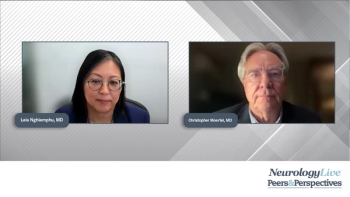
Evaluating Combined Supraorbital and Occipital Neuromodulation in Resistant Migraine Trial: The RECLAIM Study
Key Takeaways
- Resistant migraine involves frequent disabling headaches and inadequate response to multiple preventive therapies, often due to treatment failures.
- The PRIMUS system provides subcutaneous neurostimulation to trigeminal and occipital nerves, aiming to modulate headache-related neural networks.
Salvia BioElectronics’ PRIMUS system, currently being assessed in a clinical trial, delivers subcutaneous occipital and supraorbital nerve stimulation for patients with resistant migraine.
Resistant migraine is characterized by at least 8 monthly days of disabling headache and inadequate response, intolerance, or contraindication to 3 or more classes of preventive therapies. This condition primarily results from treatment failures rather than complex underlying mechanisms, and those with it may benefit from migraine-specific preventive medications. Neuromodulation represents a potential preventive treatment approach and has been shown in studies to reduce migraine days in patients with refractory migraine, a related but mechanistically distinct subgroup.1
The Salvia BioElectronics PRIMUS craniofacial nerve stimulation system is designed to provide subcutaneous neurostimulation to the branches of the trigeminal and occipital nerves. Composed of a supraorbital and an occipital subcutaneous implant, the therapy is intended to modulate headache on neural networks by utilizing mild electrical pulses. Currently, the PRIMUS system is being assessed for its safety and performance among patients with resistant migraine in the RECLAIM Study (NCT06450444), a randomized, double-blind, sham-controlled trial.2
“With the RECLAIM study, we aim to demonstrate the extent to which this combined craniofacial nerve stimulation therapy—targeting both the supraorbital and occipital nerves—can provide clinical benefit to patients with resistant migraine," Wim Pollet, MD, dhief medical officer at Salvia BioElectronics, told NeurologyLive®. "The PRIMUS system (MySalvia Therapy) delivers gentle electrical pulses through two ultra-thin implants placed just beneath the skin of the head. No implanted battery is required. Patients activate the therapy using an external wearable device, which is easy to use and provides a comfortable, patient-controlled treatment.”
A total of 62 patients will be enrolled and randomly assigned 1:1 to either the active subthreshold stimulation treatment arm, of both subcutaneous occipital nerve stimulation and supraorbital nerve stimulation devices, or the sham stimulation. The primary safety end point is the incidence of treatment-related adverse events (AEs) in all patients at 12 weeks post device activation, while the primary efficacy end point is the difference between randomization arms in the proportion of patients achieving at least a 30% reduction in monthly migraine days (MMD) from the 4-week baseline period to weeks 9 through 12 of the randomized treatment phase.
“Our nervous system uses electrical signals to regulate how our body moves, feels, and functions,” Frank Huygen, MD, PhD, FIPP, professor of anesthesiology at Erasmus MC, said in a statement.3 “In migraine, these signals can become disrupted. Neuromodulation may help correct this and restore balance.” Neuromodulation has also been proven successful in treating cluster headache, Huygen noted. “Chronic migraine is a different condition, and we are committed to investigating whether neuromodulation can also benefit [patients with migraine].”
Additional secondary safety end points will include the incidence of serious treatment-related AEs in all participants at the end of the study. Secondary efficacy end points will include the difference between randomization arms in the cumulative proportion of responder analysis based on percentage change in MMD from the 4-week baseline to weeks 9 through 12, as well as the difference between randomization arms in the mean change in MMD over the same time period.
The study is expected to last approximately 30 months and includes 17 study visits. During these visits, participants will complete a series of questionnaires, including the Hospital Anxiety and Depression Scale, Migraine-Specific Quality of Life Questionnaire, EQ-5D-5L, Work Productivity and Activity Impairment–Migraine, monthly blinded stimulation, Patient Global Impression of Change, patient satisfaction, user experience, and blinding index assessments. Participants will also maintain a daily headache diary throughout the trial.
“As one of the largest implantation centers for neurostimulators in the Netherlands, we can make a significant contribution to the RECLAIM study, aiming to offer [patients with migraine] a treatment option that enhances their quality of life,” Huygen said in a statement.3 “The pain medicine department at Erasmus MC is continuously striving to gain a deeper understanding of neurological disorders and the effects of innovative therapies.”
Eligible participants are adults aged 18 years and older with a diagnosis of migraine, with or without aura, according to the International Classification of Headache Disorders, third edition, who had a history of chronic or high-frequency episodic migraine for at least 1 year prior to screening. Participants are required to have experienced inadequate response to 3 or more preventive pharmacological therapies. Individuals are eligible for the study if they were on stable preventive migraine treatment regimens and are deemed psychologically stable.
Participants will be excluded if they had received concomitant invasive or noninvasive neuromodulation or prior exposure to an implantable neuromodulation device for headache. Individuals with an existing active implantable medical device near the planned implant location such as a deep brain stimulator or cochlear implant are also ineligible. Additional exclusion criteria include having received onabotulinumtoxinA injections for migraine treatment or steroid infiltrations or intravenous steroid administration in the 3 months preceding screening. Patients who were pregnant, nursing, or not using effective contraception are also excluded from the trial.
“For [patients with migraine] who do not experience sufficient relief from medication, neuromodulation could offer a solution. Its effectiveness has already been demonstrated for cluster headache, and the results of a small pilot study involving [patients with migraine] are also promising,” Harold Nijhuis, MD, anesthesiologist and pain specialist at St Antonius Hospital, said in a statement.3
In the study, PRIMUS implants will be placed subcutaneously using a minimally invasive technique during a brief surgical procedure. Potential risks and AEs are expected to be minimal but may include postoperative pain, sensitivity at the wound site, scarring, inadequate wound healing, infection, hematoma, blood vessel rupture, nerve injury, and allodynia.
The system will deliver mild electrical pulses to the occipital and supraorbital nerves, with regular daily stimulation intended to reduce nerve sensitivity and potentially decrease the number and/or severity of migraine attacks; however, clinical benefit may not be achieved for all patients. During the stimulation, AEs may include unpleasant paresthesia, pain, muscle contraction, and fatigue. Additional device-related risks could include allergic reaction, burns, redness, increased headache, pressure-related discomfort, warming-related discomfort, sterile abscess, skin sensitivity, erosion, and device malfunction or defect requiring explanation.
“Chronic migraine affects an estimated 1% to 2% of the global population,” migraine expert Hans Carpay, MD, PhD, neurologist at The Migraine Clinic, said in a statement.3 “Most patients are young people in the prime of their lives, often women. Many experience inadequate relief from existing therapies or medications, leaving them barely able to work and missing out on significant parts of their social lives. For some, the condition even makes it difficult for them to start a family.”
What is Salvia’s ultimate goal? “We are committed to providing people with severe migraine a new treatment option through their neurologist,” Wim Pollet, MD, medical director at Salvia BioElectronics, said in a statement.3 “Our mission is to help people with chronic migraine reclaim control over their lives.”
REFERENCES
1. Ornello R, Andreou AP, De Matteis E, Jürgens TP, Minen MT, Sacco S. Resistant and refractory migraine: clinical presentation, pathophysiology, and management. EBioMedicine. 2024;99:104943. doi:10.1016/j.ebiom.2023.104943
2. Randomized, double-blind, sham-controlled trial to investigate combined occipital and supra-orbital neuromodulation in resistant migraine: the RECLAIM study. Accessed October 30, 2025. https://www.onderzoekmetmensen.nl/en/node/57186/pdf
3. First patient in the Netherlands receives promising migraine implant in clinical study. News release. Salvia BioElectronics. February 17, 2025. Accessed October 30, 2025. https://www.salviabioelectronics.com/news/first-patient-in-the-netherlands-receives-promising-migraine-implant-in-clinical-study
Newsletter
Keep your finger on the pulse of neurology—subscribe to NeurologyLive for expert interviews, new data, and breakthrough treatment updates.



















